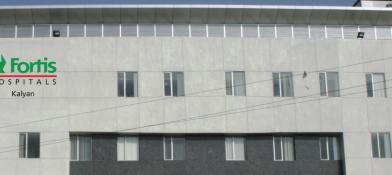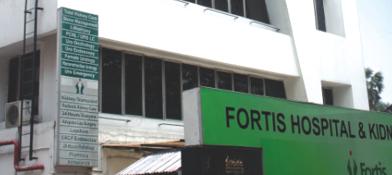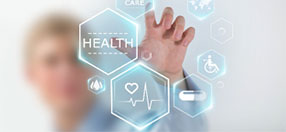Blood Pressure Test: A Guide to Understanding and Managing Your Numbers
A blood pressure test is a simple, painless, and essential non-invasive procedure that measures the force of blood pushing against the walls of your arteries. This fundamental measurement is one of the most important vital signs, providing a crucial indicator of your overall cardiovascular health. The test results, expressed as two numbers, can reveal if your blood pressure is in a healthy range, or if it is too high (hypertension) or too low (hypotension).
High blood pressure, in particular, is a widespread and serious condition known as the "silent killer" because it often has no symptoms but can quietly cause significant damage to your heart, brain, kidneys, and eyes over time. Regular blood pressure monitoring is the only way to detect hypertension. Understanding your numbers is the first and most critical step in preventing life-threatening events like heart attacks and strokes and in taking proactive control of your long-term health.
What is a Blood Pressure Test?
A blood pressure test, or measurement, is the procedure used to determine your blood pressure using an instrument called a sphygmomanometer. This typically consists of an inflatable cuff that is wrapped around your upper arm and a gauge that measures the pressure. The test can be performed manually by a healthcare professional using a stethoscope or automatically with a digital device.
The reading provides two numbers, measured in millimeters of mercury (mm Hg), and is written as a fraction:
- Systolic Pressure (the top number): This represents the maximum pressure your heart exerts while beating, pushing blood out into your arteries. It reflects the force on the artery walls during the heart's contraction phase.
- Diastolic Pressure (the bottom number): This represents the amount of pressure in your arteries when your heart is at rest between beats. It reflects the constant, background pressure on the vessel walls.
For example, a reading of 120/80 mm Hg means a systolic pressure of 120 and a diastolic pressure of 80. Together, these two numbers provide a comprehensive picture of the stress being placed on your cardiovascular system.
The Science of Blood Pressure: Understanding the Physiology
Your blood pressure is not a static number; it is a dynamic physiological variable that is constantly being adjusted by your body to meet its metabolic demands. It naturally fluctuates throughout the day, being lower during sleep and rising with activity, stress, or excitement. This complex system is tightly regulated by several interconnected mechanisms:
- The Heart (Cardiac Output): The amount of blood the heart pumps out per minute (cardiac output) is a primary determinant of systolic pressure. A stronger, faster heartbeat will increase blood pressure.
- The Blood Vessels (Systemic Vascular Resistance): The arteries are not rigid pipes; they have muscular walls that can constrict (narrow) or dilate (widen). When arteries constrict, it's harder for blood to flow through, which increases the resistance and raises blood pressure (especially diastolic). This is controlled by the nervous system and various hormones.
- The Kidneys (The Renin-Angiotensin-Aldosterone System - RAAS): The kidneys play a central role in long-term blood pressure control by regulating the body's salt and water balance. When blood pressure drops, the kidneys release an enzyme called renin, which initiates a hormonal cascade (the RAAS) that causes blood vessels to constrict and the body to retain sodium and water, thereby increasing blood volume and raising blood pressure.
- The Nervous System: The autonomic nervous system can trigger rapid, short-term changes in blood pressure in response to stimuli like stress or danger (the "fight-or-flight" response).
In a healthy individual, these systems work in perfect harmony. In hypertension, one or more of these regulatory mechanisms become dysfunctional, leading to a chronically elevated pressure that damages the body over time.
When is a Blood Pressure Test Recommended?
A blood pressure test is a routine part of almost every medical visit. Regular screening is essential for all adults.
- Routine Screening: Healthy adults over the age of 18 should have their blood pressure checked at least once every one to two years.
- Annual Screening: Annual checks are recommended for adults over 40 or for younger individuals with risk factors for hypertension.
- Frequent Monitoring: If you have been diagnosed with high blood pressure, pre-hypertension, or have other cardiovascular risk factors, your doctor will recommend more frequent monitoring, which may include home blood pressure monitoring.
- During Pregnancy: Blood pressure is monitored at every prenatal visit to screen for preeclampsia, a serious complication.
- Before and After Surgery: To ensure cardiovascular stability.
- To Monitor Medication: To assess the effectiveness of blood pressure-lowering medications and check for side effects.
Understanding the Underlying Condition: Hypertension (High Blood Pressure)
Hypertension is a chronic medical condition in which the blood pressure in the arteries is persistently elevated. This sustained high pressure forces the heart to work harder than normal to circulate blood and puts excess strain on the walls of the arteries.
Blood Pressure Categories
Medical guidelines classify blood pressure into several categories to help determine the level of risk and the appropriate course of action.
Types of Hypertension
- Primary (Essential) Hypertension: This is the most common type, accounting for 90-95% of all cases. There is no single, identifiable cause. It is believed to develop gradually over many years as a result of a complex interplay between genetics, aging, and lifestyle factors.
- Secondary Hypertension: This type is caused by an underlying medical condition. It often appears suddenly and causes higher blood pressure than primary hypertension. Common causes include kidney disease, obstructive sleep apnea, thyroid problems, adrenal gland tumors, and certain medications.
The Complications of Uncontrolled Hypertension
Hypertension is called the "silent killer" because it can cause progressive damage to vital organs over many years without any obvious symptoms. This damage includes:
- Damage to Arteries: High pressure can damage the inner lining of arteries, accelerating atherosclerosis (hardening of the arteries) and leading to the formation of aneurysms (weak, bulging spots in the artery wall).
- Damage to the Heart: It can lead to Coronary Artery Disease, causing chest pain (angina) and heart attacks. The increased workload on the heart causes the heart muscle to thicken (left ventricular hypertrophy), which can eventually lead to Heart Failure.
- Damage to the Brain: Hypertension is the single most important risk factor for Stroke. It can also contribute to the development of cognitive decline and vascular dementia.
- Damage to the Kidneys: It can damage the delicate blood vessels in the kidneys, leading to Chronic Kidney Disease and, eventually, kidney failure.
- Damage to the Eyes: It can damage the blood vessels in the retina (hypertensive retinopathy), leading to vision problems.
The Blood Pressure Test: A Step-by-Step Guide to an Accurate Reading
For an accurate measurement, several factors are important.
Preparation Before the Test:
- Avoid caffeine, smoking, and exercise for at least 30 minutes before the measurement.
- Empty your bladder. A full bladder can temporarily raise your reading.
- Rest quietly in a chair for at least five minutes before the test begins.
The Procedure:
Correct Positioning: You should be seated comfortably in a chair with your back supported and your feet flat on the floor (not crossed). Your arm should be supported on a flat surface, with the upper arm at the level of your heart.
Cuff Placement: The cuff is wrapped snugly around your bare upper arm. The cuff size must be appropriate for your arm circumference; a cuff that is too small will give an artificially high reading.
Measurement:
- Manual Method: The healthcare professional will place a stethoscope over the brachial artery at your elbow. They will inflate the cuff to a pressure higher than your expected systolic pressure, then slowly release the air. The first sound they hear through the stethoscope is the systolic pressure. The point at which the sound disappears is the diastolic pressure.
- Automated Method: With a digital device, the machine automatically inflates and deflates the cuff and provides a digital readout of the systolic and diastolic pressures and your pulse rate.
The Importance of Home Blood Pressure Monitoring (HBPM):
For many patients, especially those diagnosed with hypertension, your doctor will recommend monitoring your blood pressure at home. A single reading in a clinic can be affected by "white coat hypertension" (anxiety-induced high readings). Home monitoring provides a more accurate picture of your true blood pressure over time and helps to assess the effectiveness of your treatment. It is essential to use a clinically validated, automated upper arm cuff device and to follow the correct measurement technique.
Our Specialists
The management of hypertension is typically overseen by specialists in internal medicine and cardiology, who can provide a comprehensive treatment plan tailored to your individual needs.
Dr. (Col) Manjinder Sandhu
PRINCIPAL DIRECTOR CARDIOLOGY | Fortis Gurgaon
Dr. Anil Saxena
CHAIRMAN CARDIOLOGY | Fortis Okhla
Dr. Ashok Seth
CHAIRMAN CARDIAC SCIENCE | Fortis Okhla
Patient Stories
“During a routine corporate health check, my blood pressure reading was 150/95. I was shocked because I felt completely fine. My doctor at Fortis diagnosed me with Stage 2 Hypertension. He explained that most people have no symptoms. He didn’t just prescribe medication; he enrolled me in a lifestyle management program. With a structured diet, regular exercise, and medication, my blood pressure is now consistently around 120/80. That routine test was a wake-up call that probably saved me from a future heart attack or stroke.” — A. Singh, 45, Gurugram
“I had been ignoring my headaches and occasional dizziness for months, blaming it on stress. During a consultation for an unrelated issue, the doctor checked my blood pressure and it was alarmingly high, in the hypertensive crisis range. I was admitted immediately for monitoring and treatment. It was a terrifying experience that taught me a valuable lesson. I now monitor my BP at home, take my medication religiously, and have made significant lifestyle changes. I urge everyone to get their blood pressure checked regularly; don't wait for symptoms to appear.” — R. Mehra, 52, Delhi
The Management of Hypertension
The goal of treatment is to lower high blood pressure and protect your vital organs from damage. The management plan is a partnership between you and your doctor and almost always begins with lifestyle modifications.
Lifestyle Modifications (The Cornerstone of Treatment):
- Dietary Changes (DASH Diet): The Dietary Approaches to Stop Hypertension (DASH) diet is a proven plan rich in fruits, vegetables, whole grains, and low-fat dairy, while low in saturated fat, cholesterol, and salt.
- Sodium Reduction: Reducing your daily sodium intake is one of the most effective ways to lower blood pressure.
- Regular Physical Activity: Aim for at least 150 minutes of moderate-intensity aerobic exercise (like brisk walking or cycling) per week.
- Maintaining a Healthy Weight: Losing even a small amount of weight can make a significant difference.
- Limiting Alcohol Intake.
- Smoking Cessation: Quitting smoking is the single best thing you can do for your cardiovascular health.
- Stress Management: Techniques like yoga, meditation, and deep breathing can be beneficial.
Medical Management:
If lifestyle changes are not enough to control your blood pressure, your doctor will prescribe medication. There are several classes of effective and safe antihypertensive drugs, and your doctor will choose the best one or combination for you based on your readings and other health conditions.
Myths vs Facts
Take the Next Step
Your blood pressure numbers are among the most important health metrics you can know. A simple, quick, and painless test provides a wealth of information about your risk for the most common and serious diseases affecting our population.
Taking control of your blood pressure is taking control of your future health. Whether it's through routine screening, home monitoring, or a dedicated management plan, partnering with your doctor to know and understand your numbers is a powerful investment in a longer, healthier life.
CTA: Book a Comprehensive Health Check | Find a Cardiologist Near You
Frequently Asked Questions
1. How often should I get my blood pressure checked?
Ans. If your blood pressure is normal (less than 120/80), you should get it checked at least every two years. If it is in the elevated range or you have other risk factors, your doctor will recommend annual or more frequent checks.
2. Is one high reading a cause for panic?
Ans. No. Blood pressure can fluctuate. A diagnosis of hypertension is based on an average of two or more high readings taken on two or more separate occasions.
3. Is the blood pressure reading from my wrist or finger accurate?
Ans. For the most accurate and reliable readings, especially for medical diagnosis and management, an upper arm cuff device is the recommended standard. Wrist and finger monitors can be less accurate due to the smaller size of the arteries and the positioning of the arm.
4. What is considered low blood pressure (hypotension)?
Ans. Low blood pressure is generally defined as a reading lower than 90/60 mm Hg. It is usually not a cause for concern unless it is causing symptoms like dizziness, fainting, or blurred vision.
5. Why is the correct cuff size so important?
Ans. Using a cuff that is too small for your arm will cause the device to over-squeeze, resulting in an artificially high blood pressure reading. A cuff that is too large will give a falsely low reading.
6. Can I have hypertension and still feel energetic?
Ans. Absolutely. The absence of symptoms is a defining feature of early-stage hypertension. You can have dangerously high blood pressure and feel perfectly normal, which is why regular screening is non-negotiable.
7. Does stress cause long-term high blood pressure?
Ans. While stressful situations can cause temporary spikes in blood pressure, the direct link between chronic stress and the development of long-term essential hypertension is still being studied. However, behaviors associated with stress (poor diet, alcohol use, lack of sleep) are known risk factors.
8. Is it better to take my blood pressure in the morning or evening?
Ans. For home monitoring, it is best to take readings at the same time each day, for example, once in the morning before medication and once in the evening. This provides a consistent record for your doctor to review.

































